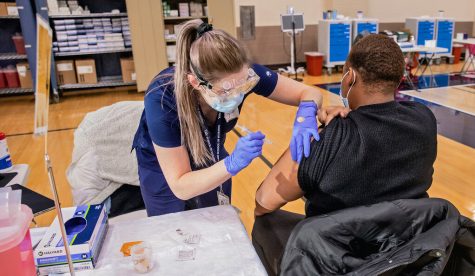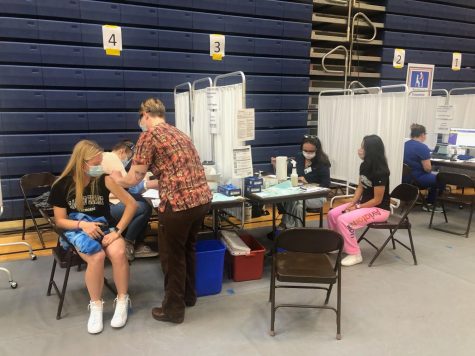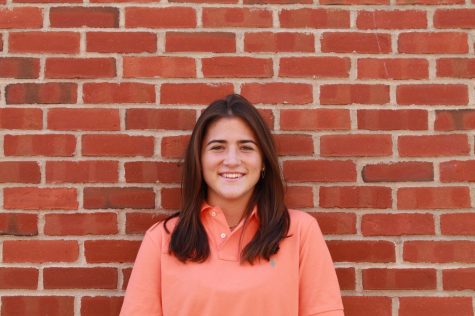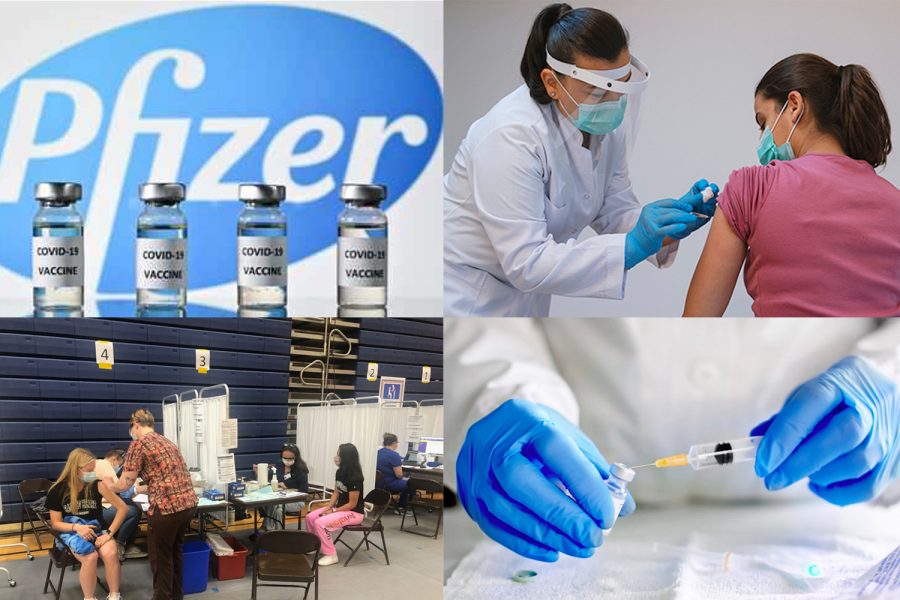Teenage vaccinations bring hope for fewer restrictions
The COVID-19 vaccine is now available in all 50 states to residents who are 16 and older.
The COVID-19 vaccine became available to teenagers who are 16 or older April 1, leading to an upsurge in high school vaccination rates. Currently, anyone over the age of 18 is eligible to receive the Pfizer, Moderna, or Janssen/Johnson & Johnson vaccine, however, individuals of the ages 16 and 17 are only able to get the Pfizer vaccine. As the vaccine becomes more accessible, many Upper School students at Sacred Heart Greenwich are receiving the vaccine and hoping for a return to normalcy next fall.

After clinical trials, the Food and Drug Administration (FDA) approved all three vaccines for distribution. Each age group’s ability to receive a specific vaccine depends on the ages of individuals tested during the trials. Pfizer-BioNTech ran tests on children as young as 12, while the Moderna vaccine clinical trials only tested those 18 and older, according to myfox8.com.
Recently, Pfizer-BioNTech asked the FDA to allow vaccine distribution for children between the ages of 12 to 15, according to healthline.com. A Pfizer-BioNTech study found that the vaccine prevented symptomatic infection, and phase three of the clinical trials determined that the vaccine is effective in children as young as 12. The results also showed that younger participants in this trial produced more antibodies compared to 16 to 25-year-olds in an alternate study.
As the vaccine becomes widely available, states are still deciding whether receiving the vaccine should be mandatory for children to attend school. All 50 states require children to get vaccines for diseases such as polio and measles in order to attend school, according to edweek.org. However, not all states will require the COVID-19 vaccine for the upcoming school year, including Pennsylvania and Tennessee.
Although teenagers are less likely to contract COVID-19, their vaccinations benefit both physical and mental health. Receiving the vaccine allows teenagers to resume their everyday activities. This partial return to normalcy includes more in-person contact, which is beneficial for teenager’s mental health according to blog.chocchildrens.org.
Sophomore Corbin Callaway discussed how receiving the COVID-19 vaccine will impact her and others going into a summer season of travel lacrosse.
“I was very excited to get the vaccine,” Corbin said. “I think it is very important to be vaccinated because it can help everyone’s lives go back to normal. From a sports perspective, I am very thankful to be vaccinated. I travel to different states and play different lacrosse clubs all across the country. I feel much safer going into the season of being vaccinated because my hope is that I do not contract the virus from other players and feel the horrific symptoms of COVID. This summer my hope is to not have to wear a mask if the majority of my team is vaccinated.”
As of Monday, April 12, over 50 percent of Connecticut residents received their first shot of the COVID-19 vaccine. Out of those who have received the first dose, 30 percent are between the ages of 16 to 44, according to ctmirror.org. As the Pfizer phase three trial was 100 percent effective in children 12 to 15, children of those ages will likely become eligible for the vaccine as well eventually.

The King Street Chronicle sent a poll out to Upper School students at Sacred Heart April 13 asking whether or not they have already received the vaccine, or if they are planning to do so. The poll found that 36 percent of students who responded have already received either the first dose or both doses of one of the three vaccines. Sixty-three percent of students have not yet received the vaccine, and 85 percent are planning on doing so.
Miss Karen Panarella, Upper School Dean of Students, discussed her newfound hope for the fall of 2021 with members of the Sacred Heart community now receiving the vaccine.
“I do think the vaccine is starting to give us hope,” Miss Panarella said. “I think the spring at school will not look too different, we will follow the same protocols. However, I do have hope for the fall and that we may be a little closer than 6 feet. As for our girls getting the vaccine here, I was surprised about how many girls have already started the process. I hope it does make a difference.”
Featured Image by Kelly Haggerty ’23

Kelly is ecstatic for her third and final year on the paper, returning as a Content Editor. In her fourth year at Sacred Heart she is looking forward to...


